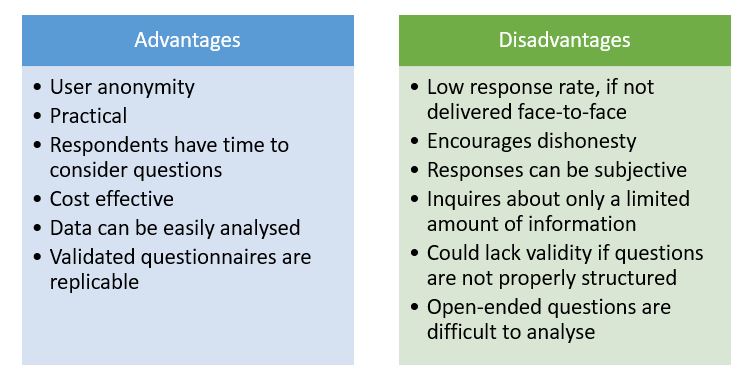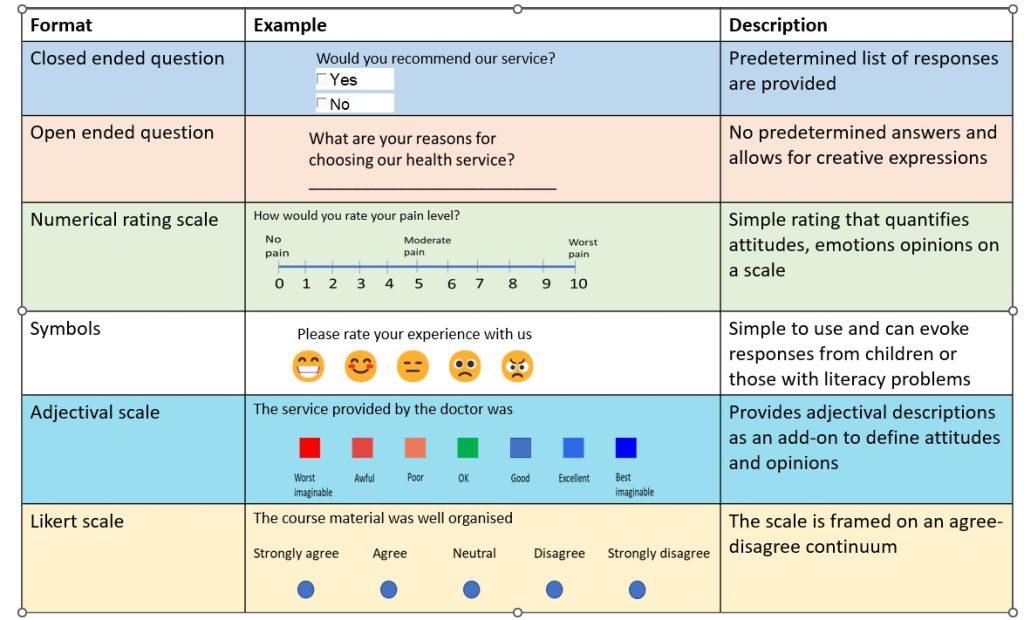3.3 Methods of Quantitative Data Collection
Data collection is the process of gathering information for research purposes. Data collection methods in quantitative research refer to the techniques or tools used to collect data from participants or units in a study. Data are the most important asset for any researcher because they provide the researcher with the knowledge necessary to confirm or refute their research hypothesis.2 The choice of data collection method will depend on the research question, the study design, the type of data to be collected, and the available resources. There are two main types of data which are primary data and secondary data.34 These data types and their examples are discussed below.
Data Sources
Secondary data
Secondary data is data that is already in existence and was collected for other purposes and not for the sole purpose of a researcher’s project.34 These pre-existing data include data from surveys, administrative records, medical records, or other sources (databases, internet). Examples of these data sources include census data, vital registration (birth and death), registries of notifiable diseases, hospital data and health-related data such as the national health survey data and national drug strategy household survey.2 While secondary data are population-based, quicker to access, and cheaper to collect than primary data, there are some drawbacks to this data source. Potential disadvantages include accuracy of the data, completeness, and appropriateness of the data, given that the data was collected for an alternative purpose.2
Primary data
Primary data is collected directly from the study participants and used expressly for research purposes.34 The data collected is specifically targeted at the research question, hypothesis and aims. Examples of primary data include observations and surveys (questionnaires).34
- Observations: In quantitative research, observations entail systematically watching and recording the events or behaviours of interest. Observations can be used to collect information on variables that may be difficult to quantify through self-reported methods. Observations, for example, can be used to obtain clinical measurements involving the use of standardised instruments or tools to measure physical, cognitive, or other variables of interest. Other examples include experimental or laboratory studies that necessitate the collection of physiological data such as blood pressure, heart rate, urine, e.t.c.2
- Surveys: While observations are useful data collection methods, surveys are more commonly used data collection methods in healthcare research.2, 34 Surveys or questionnaires are designed to seek specific information such as knowledge, beliefs, attitudes and behaviour from respondents. 2, 34 Surveys can be employed as a single research tool (as in a cross-sectional survey) or as part of clinical trials or epidemiological studies.2, 34 They can be administered face-to-face, via telephone, paper-based, computer-based or a combination of the different methods.2 Figure 3.7 outlines some advantages and disadvantages of questionnaires/surveys.

Designing a survey/questionnaire
A questionnaire is a research tool that consists of questions that are designed to collect information and generate statistical data from a specified group of people (target population). There are two main considerations in relation to design principles, and these are (1) content and (2) layout and sequence.36 In terms of content, it is important to review the literature for related validated survey tools, as this saves time and allows for the comparison of results. Additionally, researchers need to minimise complexity by using simple direct language, including only relevant and accurate questions, with no jargon.36 Concerning layout and sequence, there should be a logical flow of questions from general and easier to more sensitive ones, and the questionnaire should be as short as possible and NOT overcrowded.36 The following steps can be used to develop a survey/ questionnaire.
Question Formats
Open and closed-ended questions are the two main types of question formats.2 Open-ended questions allow respondents to express their thoughts without being constrained by the available options.2, 38 Open-ended questions are chosen if the options are many and the range of answers is unknown.38
On the other hand, closed-ended questions provide respondents with alternatives and require that they select one or more options from a list.38 The question type is favoured if the choices are few and the range of responses is well-known.38 However, other question formats may be used when assessing things on a continuum, like attitudes and behaviour. These variables can be considered using rating scales like visual analogue scales, adjectival scales and Likert scales. 2 Figure 3.8 presents a visual representation of some question types, including open-ended, closed-ended, likert rating scales, symbols, and visual Analogue Scales.

It is important to carefully craft survey questions to ensure that they are clear, unbiased and accurately capture the information researchers seek to gather. Clearly written questions with consistency in wording increase the likelihood of obtaining accurate and reliable data. Poorly crafted questions, on the other hand, may sway respondents to answer in a particular way which can undermine the validity of the survey. The following are some general guidelines for question wording.39
Be concise and clear: Ask succinct and precise questions, and do not use ambiguous and vague words. For example, do not ask a patient, “how was your clinic experience? What do you mean by clinic experience? Are you referring to their interactions with the nurses, doctors or physiotherapists?
Instead, consider using a better-phrased question such as “please rate your experience with the doctor during your visit today”.
Avoid double-barrelled questions. Some questions may have dual questions, for example: Do you think you should eat less and exercise more?
Instead, ask:
- Do you think you should eat less?
- Do you think you should exercise more?
Steer clear of questions that involve negatives: Negatively worded questions can be confusing. For example, I find it difficult to fall asleep unless I take sleeping pills.
A better phrase is, “sleeping pills make it easy for me to fall asleep.”
Ask for specific answers. It is better to ask for more precise information. For example, “what is your age in years?________ Is preferable to -Which age category do you belong to?
☐ <18 years
☐ 18 – 25 years
☐ 25 – 35 years
☐ > 35 years
The options above will give more room for errors because the options are not mutually exclusive (there are overlaps) and not exhaustive (there are older age groups above 35 years).
Avoid leading questions. Leading questions reduces objectivity and make respondents answer in a particular way. Questions related to values and beliefs should be neutrally phrased. For example, the question below is worded in a leading way – Conducting research is challenging. Does research training help to prepare you for your research project?
An appropriate alternative: Research training prepares me for my research project.
Strongly agree Agree Disagree Strongly disagree

